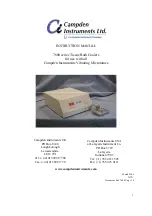
LSUHSC Shreveport
Radiology Department
Proc 13.17
Operating Guidelines for the Medrad Stellant D Injector
Purpose: In order to minimize extravasations and maintain imaging quality the
following guidelines and instructions shall be used.
Guidelines:
1.
Use a 20 gauge or larger IV catheter over needle (a 22 gauge may be used
with slower flow rates).
2.
The preferred location for venipuncture is the medially located antecubital
vein.
3.
Have at least ½ inch of the catheter positioned in a good vein with rapid
backflow.
4.
Use a 60-96 inch coiled low pressure tube securely attached to the
catheter. The coiled tubing reduces motion effect during table
incrementation.
5.
Instruct the patient to communicate immediately any pain or change in
feeling during the injection.
6.
If possible, instruct the patient to put his or her arm vertically above the
shoulder with the palm of the hand on the ace of the gantry during
injection. This allows for uninterrupted passage of injected contrast
through the axillary and subclavian veins at the thoracic outlet.
7.
A small volume test injection of contrast or saline may be utilized to
confirm venous assess. A trained professional should remain by the
patient during the initial stages of the injection palpating the venous access
site to ensure proper placement of the I.V. catheter. If focal pain, swelling
or signs of extravasation are noted, the injection should be stopped
immediately.
8.
Central lines and hep-locks should only be used in accordance with
hospital policy guidelines.
9.
Adhere to all instructions, warnings, and cautions listed for the specific
products being used.
Injector Operation
DISPLAY CONTROL PANEL
1.
INJECTION PHASES: First phase can be
Test Inject, Contrast, or
Saline.
Test Inject parameters are programmable in the
SETUP
SCREEN
. Six phases are available for programming. If more phases are
required, press the triangle below the first phase, and Select
Contrast A,
Flush B, Hold, or Pause.


























